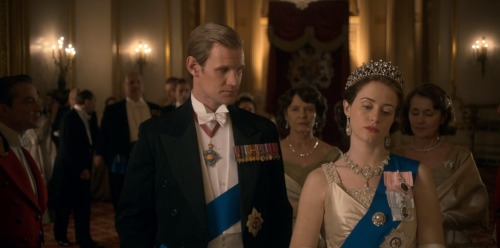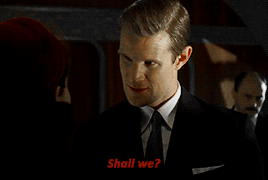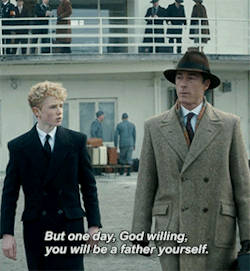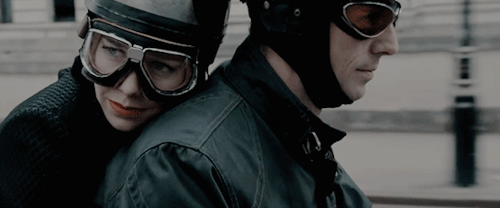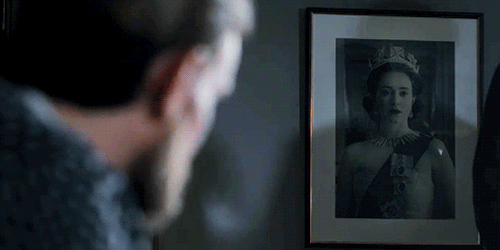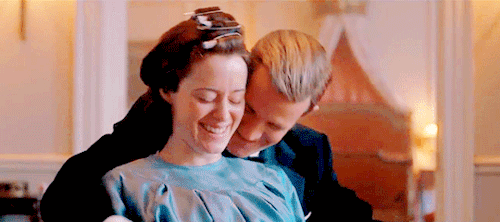
“DEATH COMES TO PEMBERLEY” (2013) Review
There is a group of mystery writers I usually read. However, one of them is not P.D. James. Mind you, I have read one of Ms. James’ novels. But it was not enough to tempt me to become a fan of her stories. I just might give her another chance . . . especially upon discovering that one of her novels was “Death Comes to Pemberley”, a 2011 sequel to Jane Austen’s 1813 novel, “Pride and Prejudice”.
Two years after the publication of James’ novel, the BBC aired a television adaptation in the form of a three-part miniseries. Set in 1803, (six years after the ending of “Pride and Prejudice”), “DEATH COMES TO PEMBERLEY” began with Elizabeth and Fitzwilliam Darcy preparing for the annual Queen Anne’s Ball at their Pemberley estate. The first guests arrive on the day before the ball – Mr. and Mrs. Bennet, Colonel Fitzwilliam and one Mr. Henry Alveston, an attorney that happened to be friends with Jane and Charles Bingley. During supper, an unexpected carriage arrive at Pemberley conveying Elizabeth’s youngest sister, Lydia Wickham, who is in a hysterical state. She claims that both her husband George Wickham and his friend Captain Denny had been arguing, when the latter angrily left the carriage in a state of anger. Wickham followed him and a few minutes later, Lydia and the carriage’s driver heard shots. Mr. Darcy organizes a search party that includes Colonel Fitzwilliam and Mr. Alveston. They find a distraught Wickham sobbing over Denny’s dead body. Very little time passes before the local magistrate, Sir Selwyn Hardcastle, finally arrests Wickham for murder.
As I had earlier stated, I have never read P.D. James’ novel. I could never make any comparison between her novel and the 2013 television adaptation. But I can convey how I felt about the latter. There were aspects of “DEATH COMES TO PEMBERLEY” that I found either perplexing or annoying. One such aspect was Elizabeth Darcy’s reaction . . . or lack of reaction to her sister Lydia Wickham’s behavior at Pemberley. In Jane Austen’s 1813 novel, Elizabeth had never been inclined to hold her tongue regarding Lydia’s childish behavior. In this miniseries, she more or less remained silent in the face of Lydia’s childish actions and spiteful words. Within her own home. Why? Why did the screenwriter allow Elizebath to remain silent and endure Lydia’s unpleasant presence? Was this supposed to be a sign of Elizabeth’s “growing maturity”? What? I never understood Elizabeth’s lack of responses when it came to her youngest sister. Another aspect that I found slightly irritating proved to be the scene in which Elizabeth and Pemberley’s housekeeper Mrs. Reynolds inspected the food prepared for the Darcys’ upcoming ball . . . for the following day. I am aware that cooks and their kitchen staff in Georgian England usually prepared cold dishes the day before any ball or banquet. Yet, the above scene featured Elizabeth and Mrs. Reynolds inspecting dishes like roast poultry and soup that were obviously not cold dishes. Yes, it is a minor complaint. Being a history buff, I found this scene slightly annoying.
Were there any other aspects of “DEATH COMES TO PEMBERLEY” that either annoyed me or I found questionable? Well . . . yes. The miniseries’ first episode featured a flashback to Elizabeth’s first ball as Pemberley’s chatelaine. This flashback featured a moment in which Elizabeth overheard two guests making snide comments about her father’s income of £2,000 pounds per year. I found this scene puzzling. Why would anyone make snide comments about Mr. Bingley’s income? Two thousand pounds per year from an estate meant that Mr. Bennet was a moderately wealthy man. Granted, he was not as wealthy as two of his sons-in-law. But he was wealthy, especially since all five of his daughters had married by this time in the family saga. And chances are, at least half or more of the Darcys’ guests earned a good deal less than Mr. Bennet. This scene struck me as another example of this erroneous belief that the Bennets came from the middle-class – a belief that either P.D. James or the miniseries’ screenwriter Juliette Towhidi shared. I must admit I found it surprising that George Wickham’s friendship with Captain Denny had survived following the former’s scandal with Lydia Bennet in “Pride and Prejudice”. Following the scandal, Darcy managed to purchase a commission in a regular Northern regiment – Colonel Fitzwilliam’s regiment – leaving Denny behind with the militia at Brighton. Perhaps this is nothing, but I found it surprising that their friendship, which never struck me as deep in the first place – had survived so long. Following her discovery of Captain Denny’s actual killer, Elizabeth and Reverend Oliphant raced to the execution site to save Wickham. They arrived in time to prevent Wickham’s execution at the last moment. Honestly, this scene seemed like a rehash of a scene from Henry Fielding’s novel, “The History of Tom Jones, a Foundling” and other stories. I found it so hokey. A giant cliché that left me wincing with embarrassment.
Despite my issues with “DEATH COMES TO PEMBERLEY”, I rather enjoyed it. A lot more than I had originally thought I would. I had featured the three-part miniseries would turn out to be one of those Jane Austen sequels filled with a good deal of hokey gimmicks. I mean . . . a sequel to “Pride and Prejudice” that turned out to be a murder mystery? Come on! Thankfully, P.D. James’ tale proved to be a great deal more interesting and just as emotionally complex as some of Austen’s best works. Captain Denny’s murder forced Elizabeth and Darcy to overcome their natural antipathy toward Wickham and face the possibility that for once, he might not be the murderer or villain in this scenario. Yet, ironically, Wickham’s past actions had led to his situation in the first place. The mystery surrounding Denny’s murder led to other issues. It revealed a good deal of class division – especially in regard to the gentry ruling class, middle-class types like Wickham and the Darcy family’s servants.
But there were other issues that manifested in the wake of Wickham’s arrest. A romantic triangle involving Georgiana Darcy, Henry Alveston and Colonel Fitzwilliam. Naturally, Wickham’s arrest has led to family troubles for both Elizabeth and Darcy. Fearful that Wickham’s conviction and execution might lead to more scandal for the Darcy family, Pemberley’s owner resumes his old habit of suppressing his emotions. Worse, Darcy becomes willing to support Colonel Fitzwilliam’s marriage proposal to Georgiana in the name of family solidarity and staving off any hint of scandal. And both of his actions threaten to alienate him from Elizaeth. Poor Georgiana seemed torn between her desire for Henry Alveston and marriage to Colonel Fitzwilliam out of family duty. Being a Darcy, she nearly allowed family duty to win the day . . . and it probably would have if her brother and sister-in-law had not learned of Fitzwilliam’s connection to Wickham and a potential scandal.
Not only did “DEATH COMES TO PEMBERLEY” provide a first-rate narrative, it was also blessed with a superb cast. Anna Maxwell-Martin shined as the initially happy Elizabeth Darcy who found herself nearly caving under the emotional strains that Wickham’s arrest had brought to Pemberley’s inhabitants and the Darcy family. Someone had once complained that Elizabeth’s famous wit seemed to be missing in this production. I certainly do not agree. I think Maxwell-Martin’s performance made it clear that Elizabeth had evolved from the younger woman in “Pride and Prejudice” inclined to put her wit on display. In other words, Elizabeth has become more mature over the years without the need to spout witicisms every now and then. But as the situation at Pemberley grew worse, it seemed obvious clear that she had not lost her sharp tongue. Judging from Fitzwilliam Darcy’s behavior during the first half of the series’ first episode, one would assume that marriage to Elizabeth had brought about a great change in his personality. Perhaps. Or perhaps this was an example of Darcy’s behavior as a happy man. Yet, once the whole situation regarding the murder and Wickham’s arrest began to take its toll, it felt as if Darcy’s personality from the 1813 novel had re-emerged with a vengeance. I have to give kudos to actor Matthew Rhys for doing such a beautiful in capturing these different aspects of Darcy’s personality. More importantly, I thought he had skillfully handled Darcy’s gradual transition from one aspect of the latter’s personality to another.
“DEATH COMES TO PEMBERLEY” also featured other excellent performances. Matthew Goode gave a complex and nuanced performance as embattled George Wickham, whose smooth and manipulative persona is shaken by the threat of a murder conviction and execution. Another first-rate performance came from Trevor Eve, who skillfully portrayed the Darcys’ neighbor and ruthless county magistrate, Sir Selwyn Hardcastle. Jenna Coleman did a great job in infusing immature shallowness, malice and a surprising touch of pathos in her portrayal of Lydia Wickham. Eleanor Tomlinson’s portrayal of Georgiana Darcy seemed to possess more depth and complexity than any previous portrayal of her. Tom Ward’s performance as the Darcys’ cousin, Colonel Fitzwilliam, struck me as one of the most interesting in the limited series. Mind you, I thought P.D. James and by extension, screenwriter Juliette Towhidi; did an excellent job in allowing the Colonel to become a more complex and ambiguous character in his own right. Yet, this transformation . . . or revelation of Colonel Fitzwilliam’s character without Tom Ward’s brilliant performance. There were other performances featured in “DEATH COMES TO PEMBERLEY” that impressed me. These performances came from James Norton, Mariah Gale, Nichola Burley, Rebecca Front, James Fleet, Philip Martin Brown, Joanna Scanlan, Jennifer Hennessey, Lewis Rainer, and Penelope Keith as Lady Catherine de Bourgh.
I also have to give kudos to the production team for “DEATH COMES TO PEMBERLEY”. It is a beautiful-looking series. This can be attributed to Grant Montgomery’s luscious production designs. Montgomery did an excellent of bringing a late Georgian provincial community to life in this limited series. I believe Steve Lawes’ sharp and colorful photography of the miniseries’ Yorkshire and Derbyshire filming locations enhanced Montgomery’s work, along with Nick Wilkinson’s art direction and Ussal Smithers’ set decorations. I also believe Marianne Agertoft’s costume designs contributed to the miniseries’ production designs. I must honest. Agertoft’s costumes did not blow my mind. But I have to say that the costumes’ color schemes – especially the women’s – struck me as rich and sharp as Lawes’ cinematography.
I will not deny that I have a few issues with “DEATH COMES TO PEMBERLEY”. But my issues are minor, in compared to my admiration for this miniseries. Because I do admire “DEATH COMES TO PEMBERLEY”. I found the series’ production aspects lush and beautiful. The cast led by Anna Maxwell-Martin and Matthew Rhys gave superb performances. More importantly, I believe director Daniel Percival and screenwriter Juliette Towhidi did an excellent job of adapting P.D. James’ novel. “DEATH COMES TO PEMBERLEY” offered a very original view into the world of Jane Austen.

Filed under: Book Review, History, Television | Tagged: anna maxwell-martin, eleanor tomlinson, georgian era, history, james fleet, james norton, jane austen, jenna coleman, jennifer hennessey, joanna scanlan, lewis rainer, literary, mariah gale, matthew goode, matthew rhys, nicola burley, p.d. james, penelope keith, philip martin brown, politics, rebecca front, television, teresa churcher, tom ward, trevor eve | Leave a comment »











